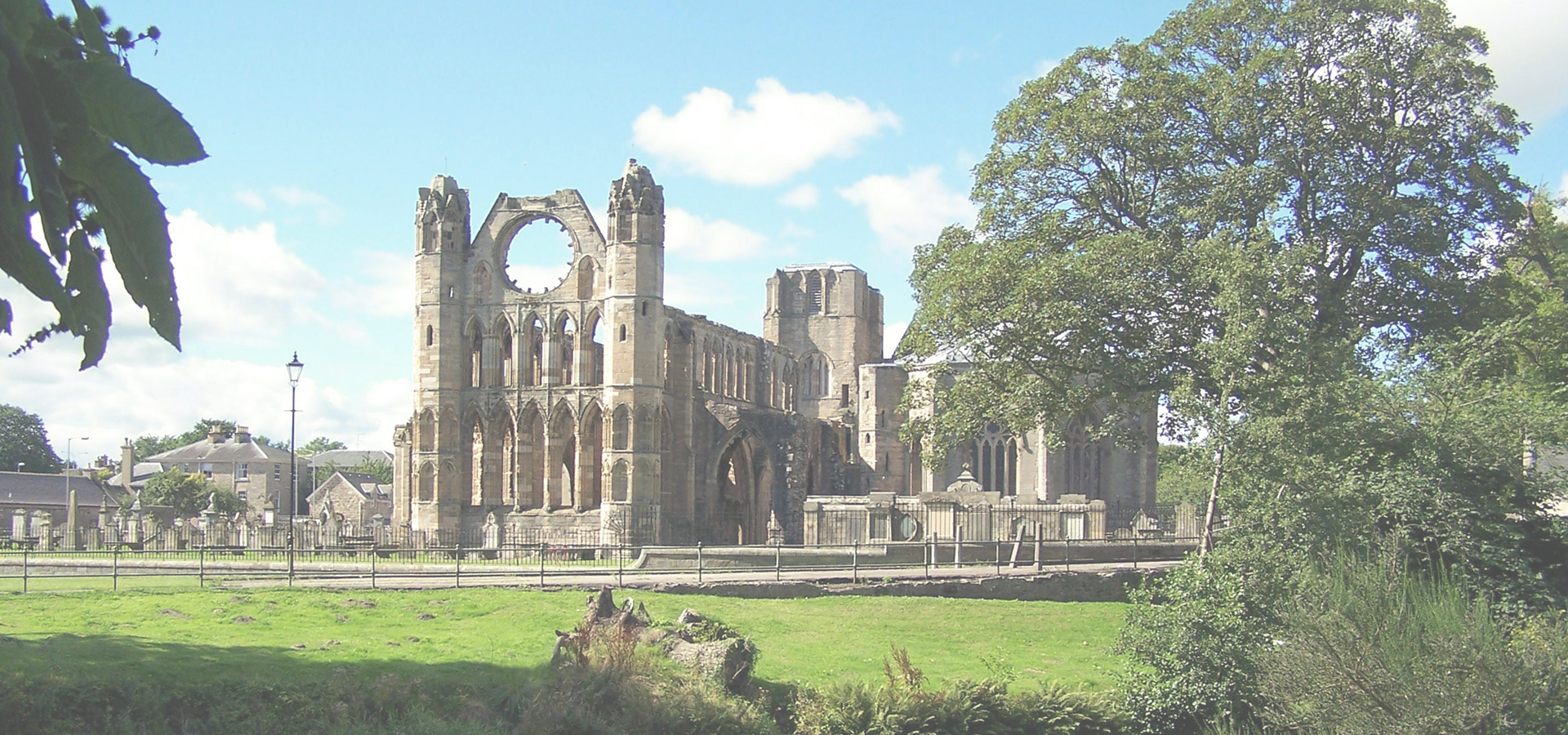🏴 Illustrator/Architect/Decorative Artist George Ashdown Audsley is associated with Elgin. In 1863 he established an architectural practice with his older brother William.
Elgin, Moray, Scotland, United Kingdom
🏴 Elgin is a city that is located in Scotland. The city is the commercial and administrative centre for the Moray council area. The city was once a cathedral city and Royal Burgh. The town originated to the south of the River Lossie on the higher ground above the flood-plain where the town of Birnie is. There, the church of Birnie Kirk was built in 1140 and serves the community to this day. Elgin is first documented in the Cartulary of Moray in 1190 AD. It was created a royal burgh in the 12th century by King David I of Scotland, and by that time had a castle on top of the present-day Lady Hill to the west of the town. The origin of the name Elgin is likely to be Celtic. It may derive from 'Aille' literally signifying beauty, but in topography a beautiful place or valley. Another possibility is 'ealg', meaning both 'Ireland' and 'worthy'. The termination 'gin' or 'in' are Celtic endings signifying little or diminutive forms, hence Elgin could mean beautiful place, worthy place or little Ireland.
Economy The Elgin–Forres–Lossiemouth triangle is heavily dependent on Royal Air Force stations for the employment of civilians. In 2005, RAF Lossiemouth along with its neighbour RAF Kinloss contributed £156.5 million (including civilian expenditure) to the Moray economy, of which £76.6 million was retained and spent locally. The bases provide, directly or indirectly, 21% of all employment in the area, although in 2010 the closure of RAF Kinloss had a significant effect on these numbers. Aware of the impact that the Air Force has on the area's economy, the local population instigated a long campaign to save RAF Lossiemouth, the future of which was also in doubt. How much of an influence this had upon the government's and Ministry of Defence's final decision is uncertain, but the base was ultimately saved and RAF Leuchars instead faced the axe as part of the same Strategic Defence and Security Review. RAF Leuchars will now become, like RAF Kinloss, an army base. Other areas offering significant employment are local authority, construction and real estate, food and drink, tourism, transport, business services and wholesale/retail.
In a recent study, Elgin was shown to be one of the most expensive towns in which to buy property in Scotland.
Transport Elgin is situated on the A96 trunk route which connects the cities of Aberdeen and Inverness. Heavy traffic through the town causes serious congestion. Scottish transport minister Tavish Scott visited the town in August 2006 to look at the traffic management problems and to meet campaigners for a bypass. It is estimated that a bypass would remove about one-third of traffic from Elgin's streets. The A941 runs from Lossiemouth through Elgin to Rothes, Craigellachie, Dufftown and Rhynie.
Elgin railway station is operated by ScotRail. The railway also connects to Aberdeen and Inverness which have trains to other UK destinations.
Elgin's bus station is operated mainly by Stagecoach, and provides services within Elgin and to other local towns as well as to Aberdeen and Inverness.
The nearest airports are Inverness Airport, which has flights to mainly UK destinations, and Aberdeen Airport which has UK and international flights.
Elgin Cathedral, Moray, Scotland

Elgin has a population of over 23,128 people. Elgin also forms the centre of the wider Moray area which has a population of over 95,520 people.
To set up a UBI Lab for Elgin see: https://www.ubilabnetwork.org Twitter: https://twitter.com/UBILabNetwork
Twin Towns, Sister Cities Elgin has links with:
🇩🇪 Landshut, Germany-
George Ashdown Audsley |
-
Francis William Deas |
🏴 Architect/Furniture Designer Francis William Deas is associated with Elgin. He was elected a Fellow of the Royal Institute of British Architects (FRIBA) in 1907.
-
Alexander Ross |
🏴 Architect Alexander (1834-1925) Ross is associated with Elgin. He was elected a Fellow of the Royal Institute of British Architects (FRIBA) in 1893.
🏴 Barrow-in-Furness -3.226
🏴 Barrow in Furness -3.226
🏴 Caerphilly -3.218
🇪🇸 Alcázar de San Juan -3.2
🇨🇮 Agnibilékrou -3.333
🏴 Pontypridd -3.342
🇪🇸 Alcalá de Henares -3.373
🏴 Merthyr Tydfil -3.375
🏴 Llandrindod Wells -3.381
🇪🇸 Arganda del Rey -3.438
🏴 Dunfermline -3.439
Locations Near: Elgin -3.3219,57.6533
🏴 Inverness -4.226,57.48 d: 57.3
🏴 Angus -2.854,56.71 d: 108.6
🏴 Forfar -2.888,56.644 d: 115.2
🏴 Dundee -2.976,56.471 d: 133.2
🏴 Perth -3.477,56.421 d: 137.3
🏴 Aberdeen -2.11,57.15 d: 91.7
🏴 Kirkwall -2.96,58.981 d: 149.1
🏴 Glenrothes -3.178,56.198 d: 162.1
🏴 Kirkcaldy -3.163,56.145 d: 168
🏴 Dunfermline -3.439,56.072 d: 176
Antipodal to: Elgin 176.678,-57.653
🇳🇿 Dunedin 170.474,-45.884 d: 18639.9
🇳🇿 Invercargill 168.373,-46.413 d: 18644.5
🇳🇿 Christchurch 172.617,-43.517 d: 18418
🇳🇿 Queenstown 168.658,-45.033 d: 18507.7
🇳🇿 Canterbury 171.58,-43.543 d: 18406.5
🇳🇿 Wellington 174.767,-41.283 d: 18189.8
🇳🇿 Hutt 174.917,-41.217 d: 18183.1
🇳🇿 Lower Hutt 174.917,-41.217 d: 18183.1
🇳🇿 Upper Hutt 175.05,-41.133 d: 18174.5
